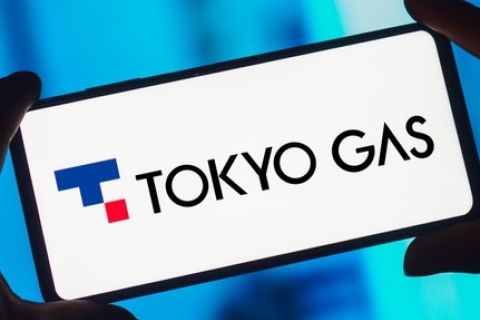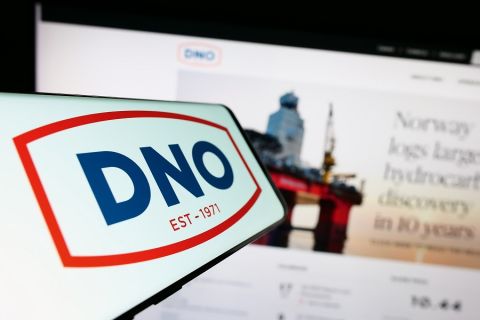Effective removal of downhole debris buildup is a long-standing well intervention challenge. For decades, wire brush assemblies have been deployed to clean casings, tubings and completion components and remove perforating deposits. Brushing is usually applied using translational motion on pipe or slickline up-anddown movement to remove scale, paraffin, cement stringers and other accumulations. With the development of wireline-powered technologies, more efficient and effective rotary motion for downhole brushing assemblies has become a reality.
The new capability of rotary motion brushing on wireline has improved the removal of downhole accumulations. Determining cleaning progress in real time and incorporating immediate-response capabilities by integrating instrumentation and full surface control into well intervention projects have further improved downhole efficiency and intervention success rates.
Leveraging instrumentation
The first step in well intervention is assessing challenges and variables. Intervention technologies differ in their response to situations and their capability to accommodate multiple downhole variables or contingencies. Many technologies cannot recognize and counter unexpected downhole variations in real time.
This is where Schlumberger’s ReSOLVE instrumented wireline intervention service comes into play. The system directs control of intervention operations with surface command of the application of radial and linear forces and rotating torque supplied by the service’s tools.
The service’s modular family of five intervention tools delivers not only dynamic tool control but also real-time monitoring and verified downhole actuation to set a new quantified standard for well intervention operations. Sensors incorporated in the tools enable the engineer to monitor tool activity and the progress of downhole operations while responsively controlling the tool for optimal performance. Integrating instrumentation for monitoring and control eliminates the reliance on estimates and assumptions typical with conventional “blind” intervention methods.
The five modular tools are readily assembled on the basic service configuration of the telemetry and control modules. Those tools are
- The selective universal shifting tool (UST) for multiple measures shifts any direction in a single run for a single component or for multiple components in multizone completions;
- The high-force linear actuator tool for controlled, high-force axial shifting for use with the service’s UST or other shifting, pulling or interface tools;
- The nonexplosive setting tool as an effective, lowrisk alternative to conventional setting of plugs and packers with explosives;
- The milling tool for maximized milling efficiency and stalling prevention from seamless integration of the milling tool and a tractor; and
- The active debris removal tool that provides realtime measurements to detect clogged bailers to adjust pumping rate, initiate jetting or work the toolstring to optimize debris collection efficiency.
As these wireline intervention tools are used, the data acquired in real time downhole are leveraged to build models, establish operational parameters and determine relationships between variables. Through these deliverables, operational efficiencies are vastly improved by enabling advanced pre-operational planning and monitoring of the progress and effectiveness of debris removal while in the well.
The combination of full surface control of the downhole tool and instrumentation in a single service allows recognizing, reacting and responding in real time to varying well conditions. Responsive automation is implemented using continuous feedback loops of the real-time measurements and surface control.
An example is the interaction between the TuffTRAC cased-hole services tractor or UltraTRAC all-terrain wireline tractor with the ReSOLVE service’s milling tool during honing, brushing or milling to inform the MillOptimizer automatic milling system. This fully autonomous system automatically coordinates tool and tractor operation to maximize rotary efficiency and prevent stalling. This improves intervention success rates over what could be achieved previously with a bit or rotating accessory stick and stall management dependent on the time it takes for the engineer to react and respond.
Clean factor
The debris removal effectiveness of the ReSOLVE service fitted with a hone or wire bristle brush can be measured using optical reflectivity and expressed as a “clean factor.” Optical reflectivity is a non-oilfield industry standard measurement with governance by numerous standards.
Hones have polishing stones affixed to flexible strands. Their polishing action creates a finer surface finish, measured as a higher optical reflectivity and clean factor value in comparison with wire brushes. This superior performance is why the honing method used to restore sealing surfaces such as well sealbores is proving viable for debris management of downhole flow tubes.
Wire bristle brushes are either a specified diameter or mounted on an articulated arm to extend to a range of inner diameters within the well. Brushing removes rust, scale, paraffin and cement stringers from tubulars or completion components. Brushing is a good option for scale preventive maintenance programs for downhole valves.
The effectiveness of the service’s honing and brushing of cemented tubulars is demonstrated by their high clean factor. The measured optical reflectivity is much greater than that measured for cement, and values after cleaning with hones are three to four times that of brushes (Figure 1).

FIGURE 1. After deployment, Hones with polishing stones achieve clean factor values that are three to four times that of wire bristle brushes (left), as is seen in comparing the images of cemented tubings after cleaning (right). (Source: Schlumberger)
Practical application
The ReSOLVE service’s instrumentation captures realtime measurements for modeling to optimize intervention operations and maximize efficiency. Using a model, parameters such as operational torque, rotational speed and system current can be established pre-operationally, measurement values determined and equipment specified.
While the tool is operating downhole, real-time logs are generated to determine the progress of debris restriction removal and provide quality checks (Figure 2). Through quality checks, the engineer can anticipate and recognize changing or unforeseen conditions and respond using surface control. Without this insight, additional runs are typically required or, even worse, the intervention objective is left unmet.

FIGURE 2. The real-time log from the ReSOLVE service (left) shows the progress of removal of a 3.5-in. cemented restriction cleaned with an articulated brush to a fi nal 3.96-in. inner diameter tubular. In the example on the right, the log was interpreted using the data provided by the service’s instrumentation to guide control from the surface to improve cleaning effectiveness by countering challenges as they may occur downhole. (Source: Schlumberger)
The service is frequently deployed offshore the Gulf of Mexico to restore functionality of scaled subsurface safety valves (SSSVs). Full function testing of SSSVs after cleaning with an articulated wire brush confirms seal integrity restoration.
One SSSV restoration operation integrated the TuffTRAC tractor with ReSOLVE service’s articulated brush to remove a 0.5-in. scale accumulation. This combination employed the MillOptimizer system for autonomous brushing. Baseline measurements were recorded for evaluating expected departures during cleaning. Four passes conveyed over the scaled interval restored the SSSVs to full functionality. This highly successful intervention—compared with previous ineffective approaches applying acid—took fewer than 12 hours of operational time and was performed rigless.
Editor’s note: This article was based on the SPE-189922-MS paper, “A Comparison of Instrumented and Surface-controllable Rotary Honing and Brushing for Well Intervention.”
Have a story idea for Operator Solutions? This feature highlights technologies and techniques that are helping upstream operators overcome their challenges. Submit your story ideas to Group Managing Editor Jo Ann Davy at jdavy@hartenergy.com.
Recommended Reading
DXP Enterprises Buys Water Service Company Kappe Associates
2024-02-06 - DXP Enterprise’s purchase of Kappe, a water and wastewater company, adds scale to DXP’s national water management profile.
ARM Energy Sells Minority Stake in Natgas Marketer to Tokyo Gas
2024-02-06 - Tokyo Gas America Ltd. purchased a stake in the new firm, ARM Energy Trading LLC, one of the largest private physical gas marketers in North America.
California Resources Corp., Aera Energy to Combine in $2.1B Merger
2024-02-07 - The announced combination between California Resources and Aera Energy comes one year after Exxon and Shell closed the sale of Aera to a German asset manager for $4 billion.
Vital Energy Again Ups Interest in Acquired Permian Assets
2024-02-06 - Vital Energy added even more working interests in Permian Basin assets acquired from Henry Energy LP last year at a purchase price discounted versus recent deals, an analyst said.
DNO Acquires Arran Field Stake, Continuing North Sea Expansion
2024-02-06 - DNO will pay $70 million for Arran Field interests held by ONE-Dyas, and up to $5 million in contingency payments if certain operational targets are met.





